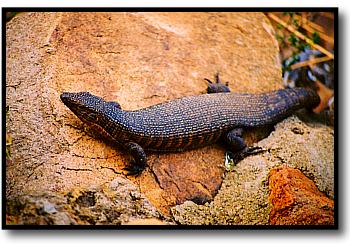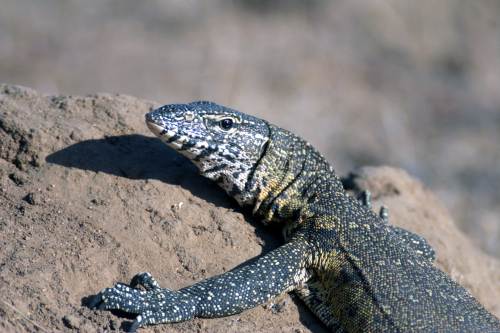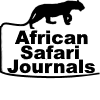
This lizard picture of a giant plated member of the species shows an individual that is probably as big as they get. It was touching a full metre in length and most of the scientific documentation about them puts their size at between 40 - 70 cm.
I was on safari in the Kruger National Park in South Africa and was scanning the horizon at the Orpen Dam lookout point for game when I heard a scrabbling noise down below. I gasped when I saw two of these monsters shuffle onto the rocks and start rotating their heads in that peculiar motion that lizards have of looking.
In most lizard photos its a struggle to get the subject to fill the frame but that really wasn't a problem here. They sat there for a few seconds more and then dashed of into the undergrowth. The females lay 2 - 5 large, oval eggs in soil-filled rock crevices in midsummer and their diet consists of flowers, leaves, figs and other soft fruit but they will also eat small lizards and even baby tortoises.

Monitor Lizard
Also known as the leguaan, I found this one basking in the sun on a termite mound in the KNP on the Salitjie road. He lay there staring at me while I took his portrait and wasn't in the mood for moving at all. They are very good swimmers and are often found near water or crawling around in the reeds at the rivers edge looking for something to eat.
They are relatively easy to photograph because they amble around pretty slowly when scavenging or not at all when they are trying to heat up in the sun, but when they are threatened they can move very rapidly indeed.


